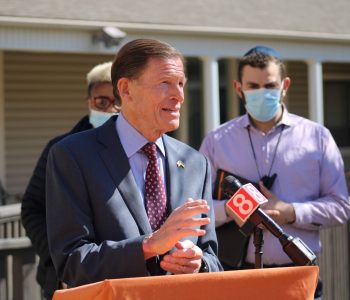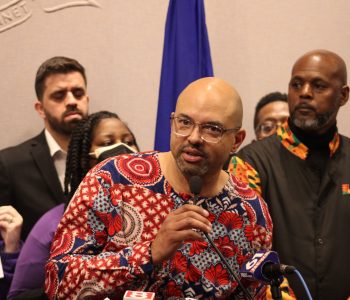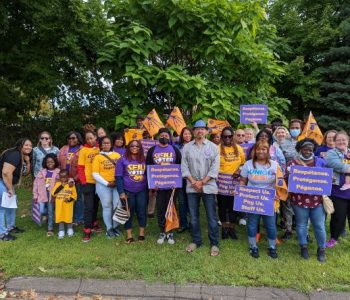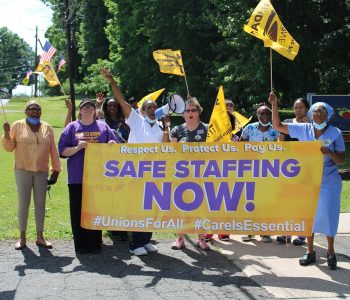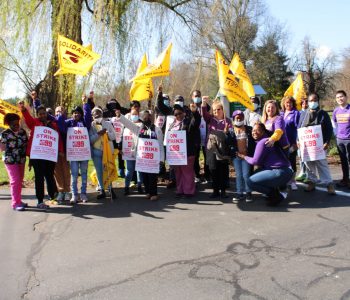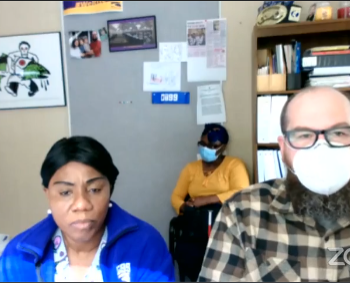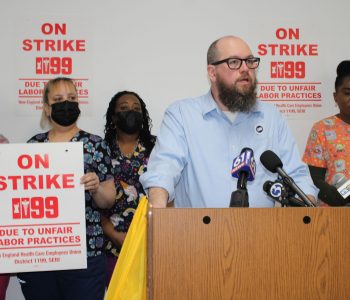
With the coronavirus tearing through the Chelsea Place Care Center in Hartford, Cassondra Diaz was careful to take precautions.
She always wore a mask, even though she worked as a bookkeeper in the front office, not providing direct care to patients. Every night, when she returned home to her New Britain apartment, she sprayed down her shoes with Lysol, removed her clothes and immediately hopped into the shower.
Despite those safeguards, Diaz, 31, contracted the coronavirus in early April and died less than three weeks later. She is one of at least seven nursing home employees in Connecticut to die of COVID-19-related complications since the virus began its lethal march. Many more have fallen ill but survived.
The pandemic has taken a devastating toll on doctors, nurses and other medical personnel, who have been hailed as heroes for their work on the front lines.
But it has also brought illness and death to the vital, but less visible, brigade of workers in nursing homes, from nurses and dietary aides to office personnel and housekeepers.
The labor force is overwhelmingly female, and predominantly African American and Latina. Many of the workers are immigrants.
Wages for nonclinical workers are low: unionized employees make an average of $12 to $15 an hour; those who are not part of a union generally earn minimum wage. (Salaries for licensed practical nurses and registered nurses are significantly higher.)
Despite the modest pay, the job has always been physically and emotionally demanding, even before the stress of the current public health crisis.
“These workers were not paid attention to until we hit this disastrous outcome,” said Randy Albelda, a professor of economics and senior research fellow at the Center for Social Policy at the University of Massachusetts Boston. “It’s a labor force that has always been essential, but never thought of as valued.”
Connecticut nursing homes have become hot zones for the virus, with patients accounting for at least 1,927 — or about 60% — of the state’s more than 3,200 COVID-19 deaths.
There has been no official tally of worker deaths. Nursing homes have not released the names of employees who have died, citing privacy concerns.
SEIU 1199, the union that represents about 7,000 workers in 69 skilled nursing facilities across the state, says hundreds of its members have been sickened by the virus and six have died.
The victims include a licensed practical nurse who immigrated from Haiti and lived in Milford, a dietary aide from Hartford who was born in Guyana and a certified nursing assistant from Jamaica who settled in Bloomfield. At least one nonunion nursing home employee has also died of COVID-19 complications.
It is impossible to say with certainty how these workers contracted the virus. But some say they lacked access to N95 masks and other protective equipment.
“We’re just crying out for help right now,” said Tanya Beckford, a certified nursing assistant at the Newington Rapid Recovery Rehab Center. “We didn’t have the proper gear … we were wearing plastic bags that left our arms exposed.”
Beckford, who is 48 and lives in Manchester, contracted the virus in April and developed pneumonia. Six weeks later, she is fighting exhaustion.
“I get so upset when I hear the word ‘hero’ thrown around,” Beckford said. “They can keep that word, it means nothing to us. We are essential workers and we’re hurting right now.”
Matthew Barrett, president and CEO of the Connecticut Association of Health Care Facilities, which represents nursing homes across the state, said allegations of a lack of protective equipment need to be vetted by state regulators.
“We also need to be mindful that guidance from public health officials is complicated and has changed as the highly contagious virus has become better understood, especially in terms of its asymptomatic transmission in and outside of nursing homes,” he said. “Accordingly, we have to keep an open mind that implementation of the government’s guidance can sometimes be misconstrued as violating rules when, in fact, it is really implementation of the rules. This can and should be sorted out in the independent review”
He added: “Connecticut nursing homes agree that an adequate supply of all PPE and its proper use is essential in terms of preventing the further spread of the virus and protecting health care workers.”
‘Always ready’

Miriam Chinwe Kwentoh, a registered nurse at The Willows, a 90-bed facility in Woodbridge, wasn’t afraid to treat patients coming down with the new virus.
“She was always ready to take on anything her job required,” said her daughter, Joy Kwentoh. “She was such a strong lady and she loved her job as a nurse.”
Miriam Kwentoh, 48, had trained in her native Nigeria. A single mother of four, she often worked back-to-back double shifts “just to put a roof over our heads,” Joy Kwentoh said. “She did everything for us and she never complained one bit.”
For Miriam Kwentoh, nursing home work provided an entree to a “golden lifestyle,” her daughter said. Her skill and hard work paid off: She was able to buy a house in Meriden, a Lexus and other cars and pay her children’s college tuition.
A fashionista with a joyous laugh, she was close to her children, joining them for manicures and cooking them elaborate meals. She talked about opening up a restaurant one day. She was also devoted to her two young grandchildren, Prince and Promise Obodoechina.
In March, Miriam Kwentoh fell ill and wound up in the hospital on a ventilator. On April 16, she was removed from the ventilator — without her family’s consent, they said — and she died.
“She died a super hero, saving lives which she enjoyed doing,” her obituary stated.
‘An old soul’

By April, many nursing home employees were working long hours as caseloads rose and some of their colleagues became ill.
For some, financial necessity played a role. Diaz enjoyed her job at Chelsea Place but she also needed it: Her husband, Sean Diaz, who worked in the service industry, had recently been laid off and she became the primary breadwinner.
She continued to report to work as the number of confirmed cases rose. Her family said she had been provided with adequate personal protective equipment by the nursing home’s management.
Diaz had started at the 234-bed care center in 2019 as a front desk clerk, checking in visitors. When the facility’s bookkeeper went out on maternity leave, she jumped at the opportunity to fill in. She held an associate’s degree in business and was ready for the challenge.
Even though she did not provide direct patient care, Cassondra Diaz forged a strong connection with residents of the facility.
“She was an old soul,” said her aunt, Mary Cristofaro. “She had an understanding of the complexities of people. She was a very compassionate person.”
Judy Konow, the administrator of Chelsea Place, described Diaz as “an extremely kind person” who “was always smiling and willing to help in any way she could.”
Cassondra Diaz comes from a large and close family. She had a tight bond with her younger cousins, hosting “beauty days” where she would style their hair and do their makeup. She also lavished attention on older relatives and was extremely close to her mom, Christine Olejarz.
On April 9, Cassondra Diaz was feeling unwell and left work early. She spent the night at The Hospital of Central Connecticut in New Britain, where she was treated for dehydration and sent home the following day without a coronavirus test.
For a time, her condition improved: She was even able to celebrate her first wedding anniversary with Sean on April 20.
A few days later, she had a telehealth appointment with her physician, who told her she had strep throat and prescribed an antibiotic. She was also given an order for a COVID-19 test.
On the morning of April 29, Cassondra Diaz woke up gasping for breath. Alarmed, her husband called 911.
The medics arrived and, slowly, she made her way down three flights of stairs and out of the house, where a gurney awaited in the driveway to take her to the hospital.
“She saw her husband and she said ‘I love you,’ and then she died,” Cristofaro said. “She passed right there in the driveway.”
The family believes she died of a blood clot, a COVID-19 complication. Her coronavirus test result came back on April 30: it was positive.
Article from The Hartford Courant
Written by By DANIELA ALTIMARI
